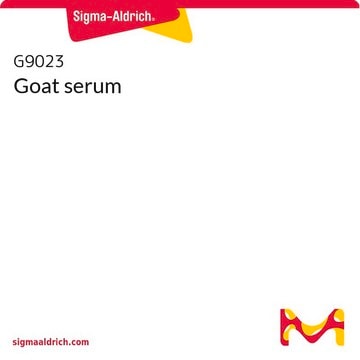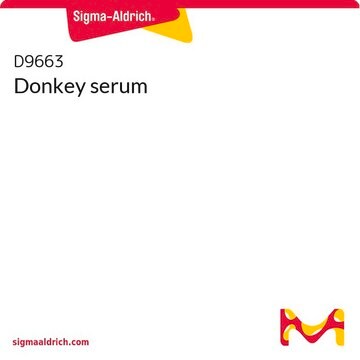ABE290
Anti-TET3
from rabbit, purified by affinity chromatography
Synonim(y):
Methylcytosine dioxygenase TET3
Wybierz wielkość
Wybierz wielkość
About This Item
Polecane produkty
pochodzenie biologiczne
rabbit
Poziom jakości
forma przeciwciała
affinity isolated antibody
rodzaj przeciwciała
primary antibodies
klon
polyclonal
oczyszczone przez
affinity chromatography
reaktywność gatunkowa
mouse
reaktywność gatunkowa (przewidywana na podstawie homologii)
human (based on 100% sequence homology), rat (based on 100% sequence homology), nonhuman primates (based on 100% sequence homology)
metody
ChIP: suitable (ChIP-seq)
immunocytochemistry: suitable
immunoprecipitation (IP): suitable
western blot: suitable
numer dostępu NCBI
numer dostępu UniProt
Warunki transportu
ambient
docelowa modyfikacja potranslacyjna
unmodified
informacje o genach
human ... TET3(200424)
Powiązane kategorie
Opis ogólny
Specyficzność
Immunogen
Zastosowanie
Chromatin Immunoprecipitation-sequencing (ChIP-seq) Analysis: A representative lot detected TET3 chromosome enrichment sites by ChIP-seq analysis (10 µg per ChIP) using chromatin preparation from mouse embryonic stem cells (mESCs) transfected to overexpress mouse TET3 (Courtesy of Reik lab, Epigenetics ISP, Babraham Institute, UK).
Immunocytochemistry Analysis: A 1:250 dilution from a representative lot immunostained 4% paraformaldehyde-fixed, 0.5% Triton X-100-permeabilized mouse embryonic stem cells (mESCs) transfected to overexpress mouse TET3 oocyte isoform Tet3o (Courtesy of Reik lab, Epigenetics ISP, Babraham Institute, UK).
Immunocytochemistry Analysis: A 1:250 dilution from a representative lot detected the immunoreactivity of TET3 oocyte isoform Tet3o in 4% paraformaldehyde-fixed, 0.5% Triton X-100-permeabilized mouse zygotes (Courtesy of Reik lab, Epigenetics ISP, Babraham Institute, UK).
Immunoprecipitation Analysis: 10 µg from a representative lot co-immunoprecipitated endogenous OGT with the exogenously overexpressed mouse TET3 from transfected mouse embryonic stem cells (mESCs) by RIME (Rapid Immunoprecipitation Mass spectrometry of Endogenous proteins) (Courtesy of Reik lab, Epigenetics ISP, Babraham Institute, UK).
Jakość
Western Blotting Analysis: 2 µg/mL of this antibody detected the exogenously expressed mouse TET3 GFP fusion protein in 10 µg of lysate from transfected mouse embryonic stem cells (mESCs).
Opis wartości docelowych
Przechowywanie i stabilność
Inne uwagi
Nie możesz znaleźć właściwego produktu?
Wypróbuj nasz Narzędzie selektora produktów.
Kod klasy składowania
12 - Non Combustible Liquids
Klasa zagrożenia wodnego (WGK)
WGK 1
Temperatura zapłonu (°F)
Not applicable
Temperatura zapłonu (°C)
Not applicable
Certyfikaty analizy (CoA)
Poszukaj Certyfikaty analizy (CoA), wpisując numer partii/serii produktów. Numery serii i partii można znaleźć na etykiecie produktu po słowach „seria” lub „partia”.
Masz już ten produkt?
Dokumenty związane z niedawno zakupionymi produktami zostały zamieszczone w Bibliotece dokumentów.
Active Filters
Nasz zespół naukowców ma doświadczenie we wszystkich obszarach badań, w tym w naukach przyrodniczych, materiałoznawstwie, syntezie chemicznej, chromatografii, analityce i wielu innych dziedzinach.
Skontaktuj się z zespołem ds. pomocy technicznej








